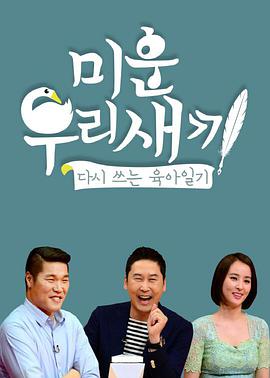- 影片介绍
- 漾出overflow2未(wèi )增删带翻译(🤙)漾出Overflow2未增删(shān )带翻译在(🐣)计算(suàn )机科学(xué )领域(yù ),在处理大量数据时,常常(cháng )会遇到溢出(overflow)(🙂)的问题(🥅)。溢(yì )出指的是当计算机用(yòng )有限的位数来表(🙃)示一个数值时,如果这(⏩)个数值(zhí )超(chāo )出了该位数所(suǒ )能表示的范围(wéi ),漾(💿)出overflow2未增删带翻译
漾出Overflow2未增删带翻译
在计算机科学领(👸)域,在处理大量数据时,常常会遇到溢(👻)出(overflow)的问题。溢出指的是当计算机用有(🍻)限的位数来表示一个数值时,如果这个数值超出了该位数所能表示的范围,就会导致溢出错误。为了解决溢出问题,漾出(🍅)Overflow2是一个被广泛使用的方法。
漾出Overflow2是一个基于算法的技术,它可以在不增加或删除数据的情况下,将溢出问题转化为可处理的形式。该方法通过使用(🙍)不同数据类型或进行数据缩放来避免(🐒)数值超出范围。为了更好地理解漾出Overflow2的工作原理,我们来详细介绍一下。
首先,漾出(🙉)Overflow2使用了不同的数据类型(🛣)。在计算机中,不同的数据类(🦑)型有不(🥪)同的表示范围。例如,一个8位的无符号(🎺)整数数据类型可以表示0到255之间的数值,而一个32位的有符号整数数据类型可以表示-2147483648到2147483647之间的数值。漾出(🕡)Overflow2通过选择适当(🤐)的(🔘)数(🐬)据类型来保证计算过(🐾)程中不会发生溢出。当一个计算(🛳)过程涉及到多个数据类型时,漾(🚇)出Overflow2会在不同的数据类型之间进行转换,以避免溢出。
其次,漾出Overflow2还(💶)使用了数据缩放的技(🔹)术。数据缩放是一种将数据按比例调整大小的方法。在漾出Overflow2中,如果一个计算过程的结果已(🍁)经超出了某个数据类型所能表示的范围,那么可以通过将结果缩小一定比例,使其重新回到合法的范围内。然后,再(⛔)对缩小后的结果进行必要的处理,以保证计算结果的准确性。
最后,漾出Overflow2还利用了一种称为数据截断的(🤾)技术。数据截(🐢)断是一种将数据的一部分丢弃的方法。在漾出Overflow2中,如果一个计算过(📢)程的结果已经超出了某个数据类型所能表示的范围,那么可以通过丢弃结(🏀)果的一部分数据,使其重新回(💀)到合法的范围内。然后,再对截断后的结果进行必要的处理,以保证计算结(✏)果的准确性。
总之,漾出Overflow2是一个从专业角(🌠)度解决溢出问题(😎)的方法。它通过使用不同的数据类型(🧤)、数据缩放和数据截断等技术,从而有(🐳)效地避免了溢出错误。在处理大量数据时,漾出Overflow2可以帮助我们保持计算结(🍳)果的准确性,提高(📨)计算效率。
Overflow2 without Addition or Deletion with Translation
In the field of computer science, overflow is a common problem when dealing with large amounts of data. Overflow occurs when a value exceeds the range that can be represented with a limited number of bits. To address this issue, Overflow2 without Addition or Deletion, also known as "漾出Overflow2" in Chinese, is a widely used method.
Overflow2 without Addition or Deletion is an algorithm-based technique that converts overflow problems into manageable forms without adding or deleting data. This method avoids value overflow by using different data types or scaling the data. To better understand how Overflow2 without Addition or Deletion works, let's delve into its workings.
Firstly, Overflow2 without Addition or Deletion utilizes different data types. Different data types have different representation ranges in computers. For example, an 8-bit unsigned integer data type can represent values between 0 and 255, while a 32-bit signed integer data type can represent values between -2147483648 and 2147483647. Overflow2 without Addition or Deletion ensures that overflow does not occur during computations by selecting appropriate data types. If a computation involves multiple data types, Overflow2 without Addition or Deletion converts between them to prevent overflow.
Secondly, Overflow2 without Addition or Deletion employs data scaling techniques. Data scaling is a method used to proportionally adjust the size of data. In Overflow2 without Addition or Deletion, if a computation's result exceeds the representation range of a data type, the result can be scaled down by a certain proportion to bring it back within a valid range. Then, the scaled-down result undergoes necessary processing to ensure accuracy.
Lastly, Overflow2 without Addition or Deletion utilizes data truncation, a method that discards a portion of the data. In Overflow2 without Addition or Deletion, if a computation's result exceeds the representation range of a data type, a portion of the result can be discarded to bring it back within a valid range. Then, the truncated result undergoes necessary processing to ensure accuracy.
In conclusion, Overflow2 without Addition or Deletion is a professional approach to address overflow problems. By utilizing different data types, data scaling, and data truncation techniques, Overflow2 without Addition or Deletion effectively avoids overflow errors. When handling large amounts of data, Overflow2 without Addition or Deletion helps maintain the accuracy of computation results and improves efficiency.
手(shǒu )工艺(yì )术作为一门艺术(shù )形式,早已(yǐ )有(yǒu )着(zhe )悠(yōu )久的(de )历史(💊)。从(cóng )古代(👘)(dài )的刺绣、织布到现代的手工绘画、陶艺,人们(men )一直将(jiāng )手工艺术视为(wéi )传承(chéng )和表达文化的方式。而在这(zhè )个数字(🌝)化(🍱)时代,手工少女以自(👽)己的(🦕)热情和创造(zào )力,将手工艺术重(chóng )新(xīn )注入(rù )现代社会(huì(💁) )。
- 随便看看

人体器官交易实录
阿贾耶·德乌干,马达范,janki bodiwala
恐怖片
2024/印度
HD

想见你电影版在线观看免费播放
欧文·泰格,弗蕾娅·艾伦,凯文·杜兰,皮特·马孔,威廉姆·H·梅西,艾卡·达维尔,迪辰·拉克曼,尼尔·桑迪兰兹,萨拉·怀斯曼,莉迪亚·佩克汉,特拉维斯·杰弗里,拉斯-塞缪尔·瓦尔达布兹,尼娜·加拉斯
科幻片
2024/美国
抢先版

娱乐圈血肉史
文塔瓦·史蓝蓬,尤万娜特·阿拉亚尼米萨库,Panissara Phimpru,拉楚·苏拉查拉斯,楚缇玛·提潘娜特,Chalermpol Tuntawisut,Kazuki Yano
喜剧片
2006/泰国
已完结

新世纪福音战士剧场版破_1
申东烨,徐章勋,韩惠珍,金建模
喜剧片
2016/韩国
更新至20230528期

龙腾世纪2修改器
甄子丹,黄圣依,王宝强,任达华,喻亢,江疏影,仓田保昭,鲍起静,林雪,庄锶敏,胡明,吴俊余,王文绮
动作片
2018/中国大陆 / 中国香港
正片

别急慢慢来1978年美国
甄子丹,黄圣依,王宝强,任达华,喻亢,江疏影,仓田保昭,鲍起静,林雪,庄锶敏,胡明,吴俊余,王文绮
动作片
2018/中国大陆 / 中国香港
正片

河东狮吼电视剧_2
宋芸桦,姜涛,姚淳耀,魏蔓,李嘉文
剧情片
2023/中国台湾
正片

你懂得网址在线播放
吉姆·卡明斯,乔赛琳·唐娜休,理查德·布雷克,尼古拉斯·罗根,费松·拉夫,迈克尔·阿伯特,吉因·琼斯,罗宾·巴特利特,谢拉·麦克康米克,康勒·帕奥罗,瑞恩·马松,艾丽克斯·埃索,萨姆·亨廷顿,Jon Proudstar,芭芭拉·克兰普顿,Robert Broski,Matt McVay
恐怖片
2023/美国
HD

隔壁的阿姨
阿瓦·拉塔纳平塔,亚瑞克·阿莫苏帕西瑞,卜密巴特·塔沃斯理,帕尼莎拉·里库苏拉康,沃恩吉莱·勒姆威拉伊
恐怖片
2023/泰国 / 柬埔寨
第112集

爱我请留言粤语
剧情片
2024/日本
HD

疯狂浴室韩国在线_1
白恩,曲尼次仁
剧情片
2024/中国大陆
HD

叶子广场舞小苹果
卡琳·里奇曼 火花秀健杰 弗里·史密斯
剧情片
2024/美国
抢先版